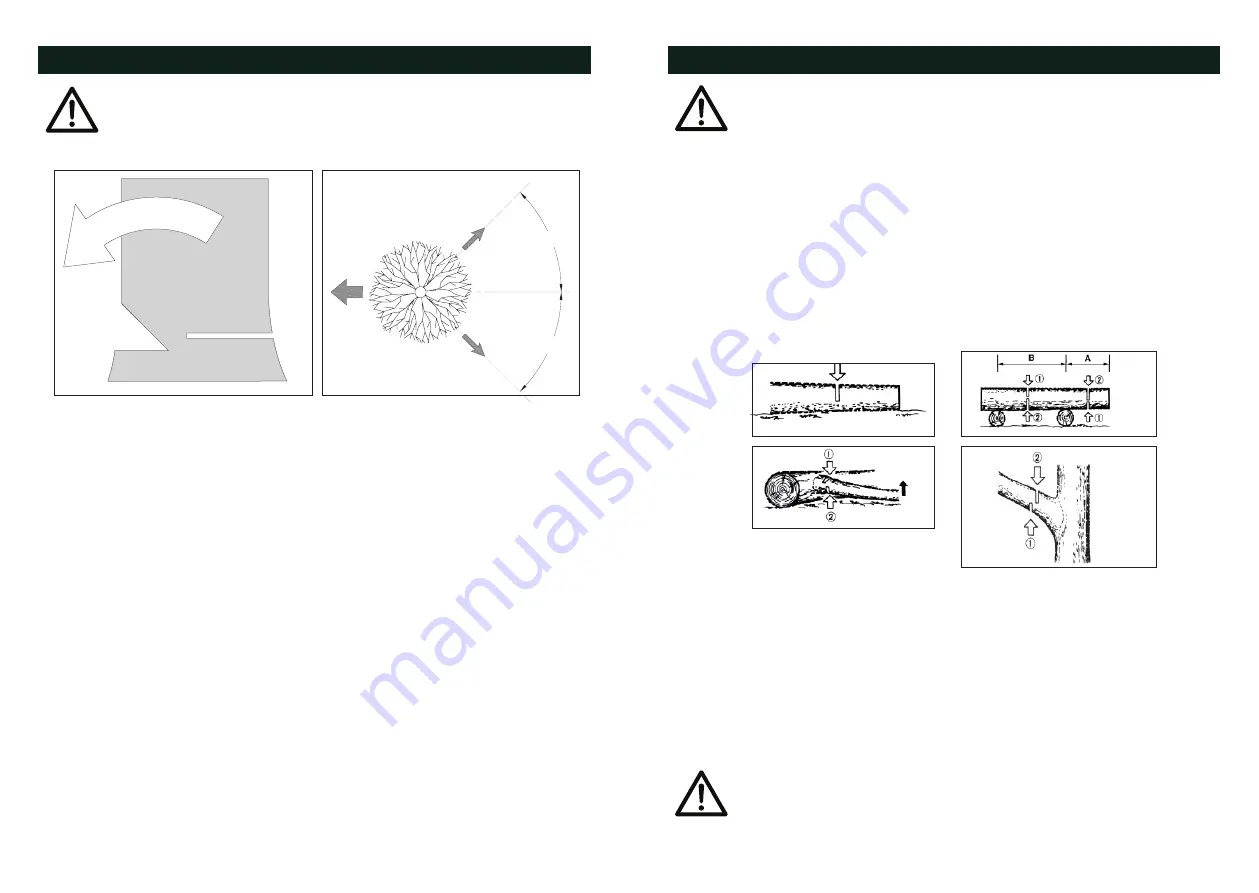
24
25
Step 6 - Felling a Tree
WARNING!
You should have received training from a suitable person before attempting to
fell a tree.”
When you fell a tree, be sure to warn anyone in close proximity of the danger.
1
2
felling direction
1st cut
2nd cut
45°
45
°
A
B
1.
When deciding the felling direction, consider the wind, lean of the tree, location of
heavy branches, ease of job after felling, and other factors.
2. While cleaning the area around the tree, arrange a good foothold and retreat path.
3. Make a notch cut one-third of the way into the tree on the felling side.
4.
Make a felling cut from the opposite side of the notch and at a level slightly higher than
the bottom of the notch.
5. Escape path: First, clear the tree base and work area of interfering limbs and brush,
and clean its lower portion with an axe. Then, establish two paths of escape (B)
and remove all obstacles. These paths should be generally opposite to the planned
direction of the fall of the tree (A) and at about a 45° angle. Place all tools and
equipment a safe distance away from the tree, but not on the escape paths.
Step 7 - Bucking and limbing
WARNING!
•
Always ensure a stable foothold; do not stand on the log.
•
Be alert to the rolling over of a cut log, especially when working on a slope,
and stand on the uphill side of the log.
•
Follow the instructions in ‘Safety Instructions’ to avoid kickback from the
saw.
•
Before starting work, check the direction of the bending force inside the
log to be cut. Always finish cutting from the opposite side of the bending
direction, to prevent the chain bar from being trapped in the cut. Follow this
guidance:
•
Do not use an unstable foothold or ladder.
•
Do not overreach.
•
Do not cut above shoulder height.
•
Always use both hands to grip the saw.
FIG. A
FIG. B
FIG. C
FIG. D
A log lying on the ground (FIG. A)
Saw down halfway, then roll the log over and cut from the opposite side.
A log supported off the ground (FIG. B)
In area A, saw up from the bottom one-third and finish by sawing down from the top. In area
B, saw down from the top one third and finish by sawing up from the bottom.
Cutting the limb of a fallen tree (FIG. C)
First check to which side the limb is bent. Then make an initial cut from the bend side and
finish by sawing from the opposite side.
WARNING!
Be alert to the spring back of a cut limb.
Pruning of a standing tree (FIG. D). Cut up from the bottom, finish down from the
top.




































